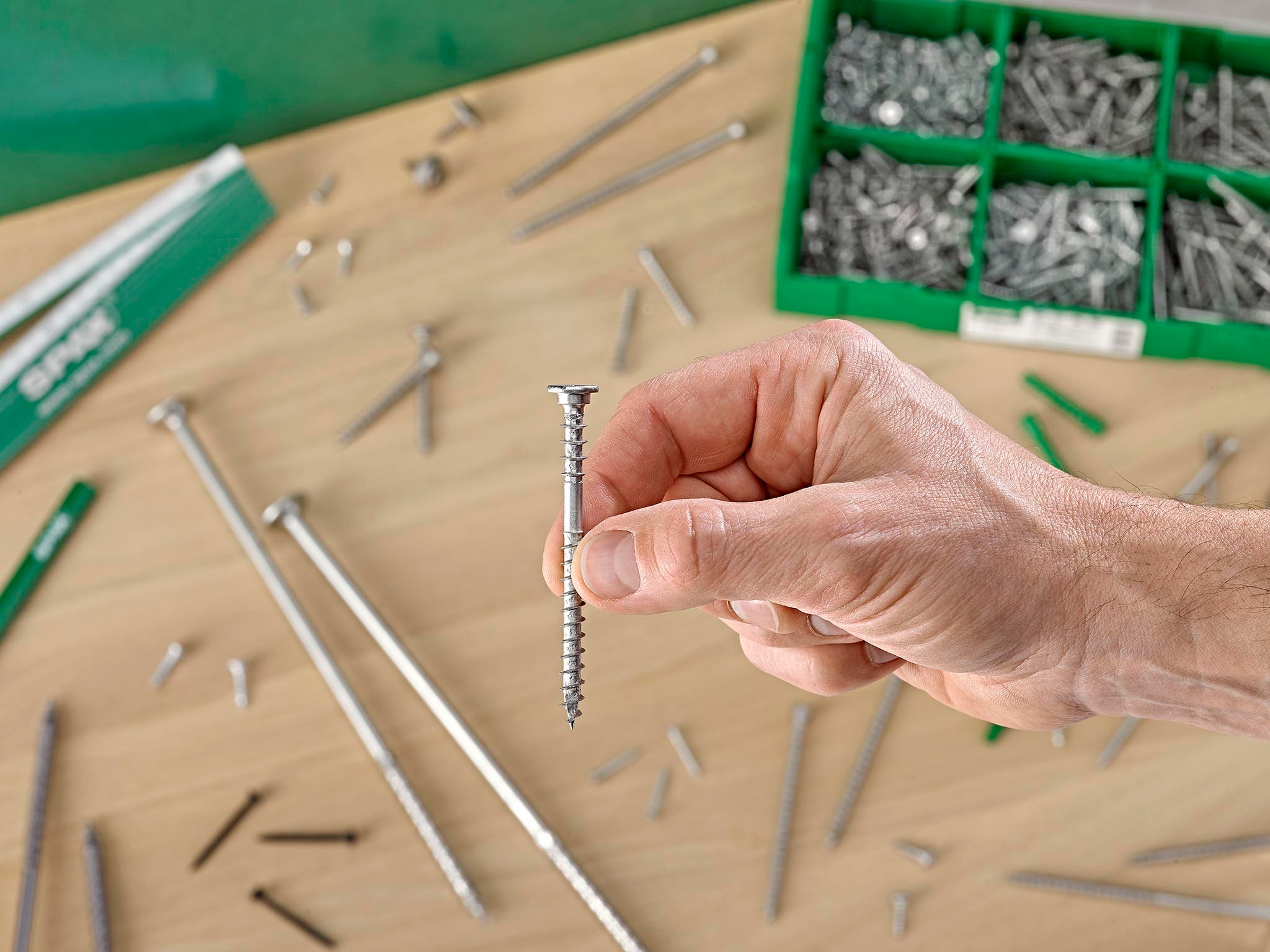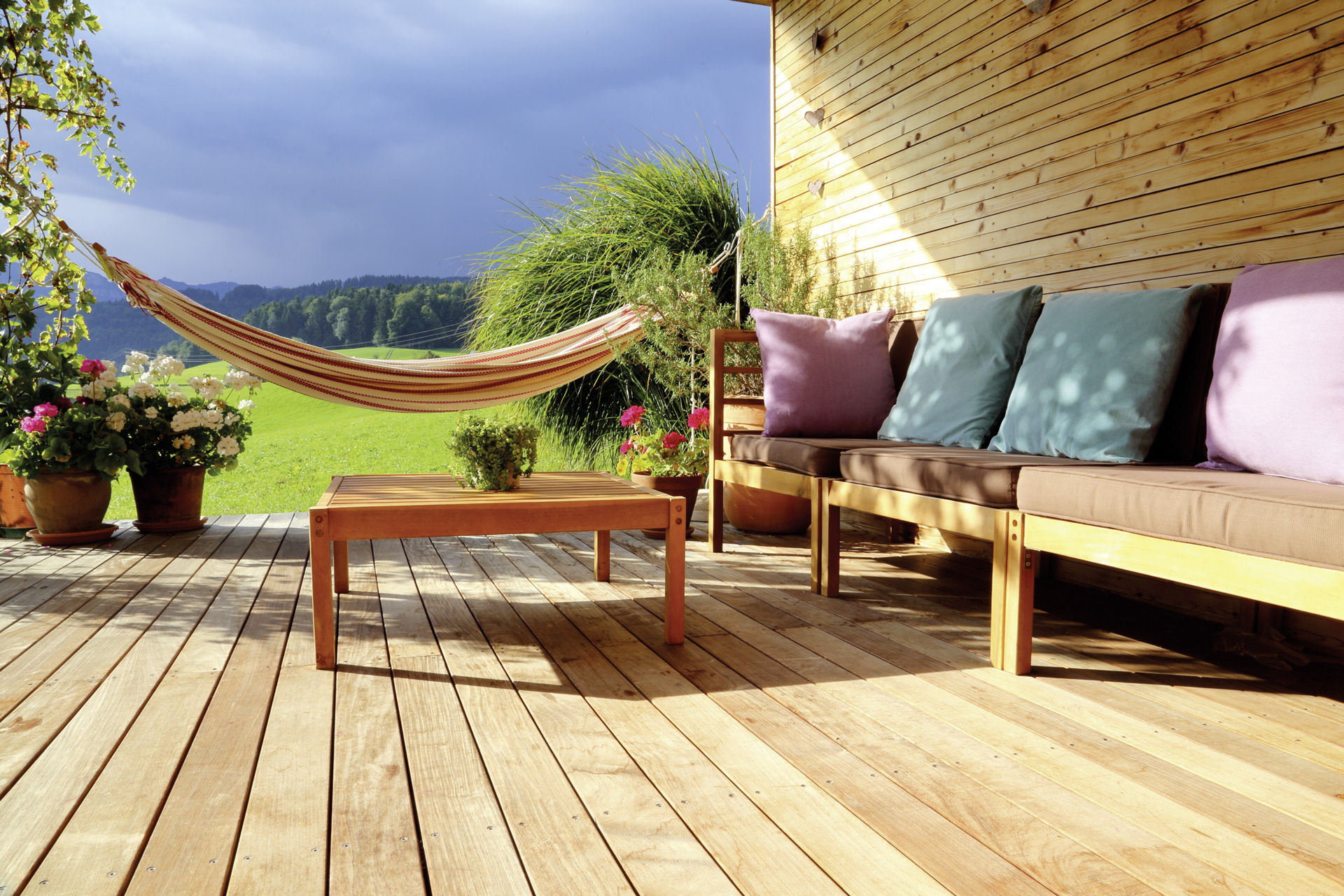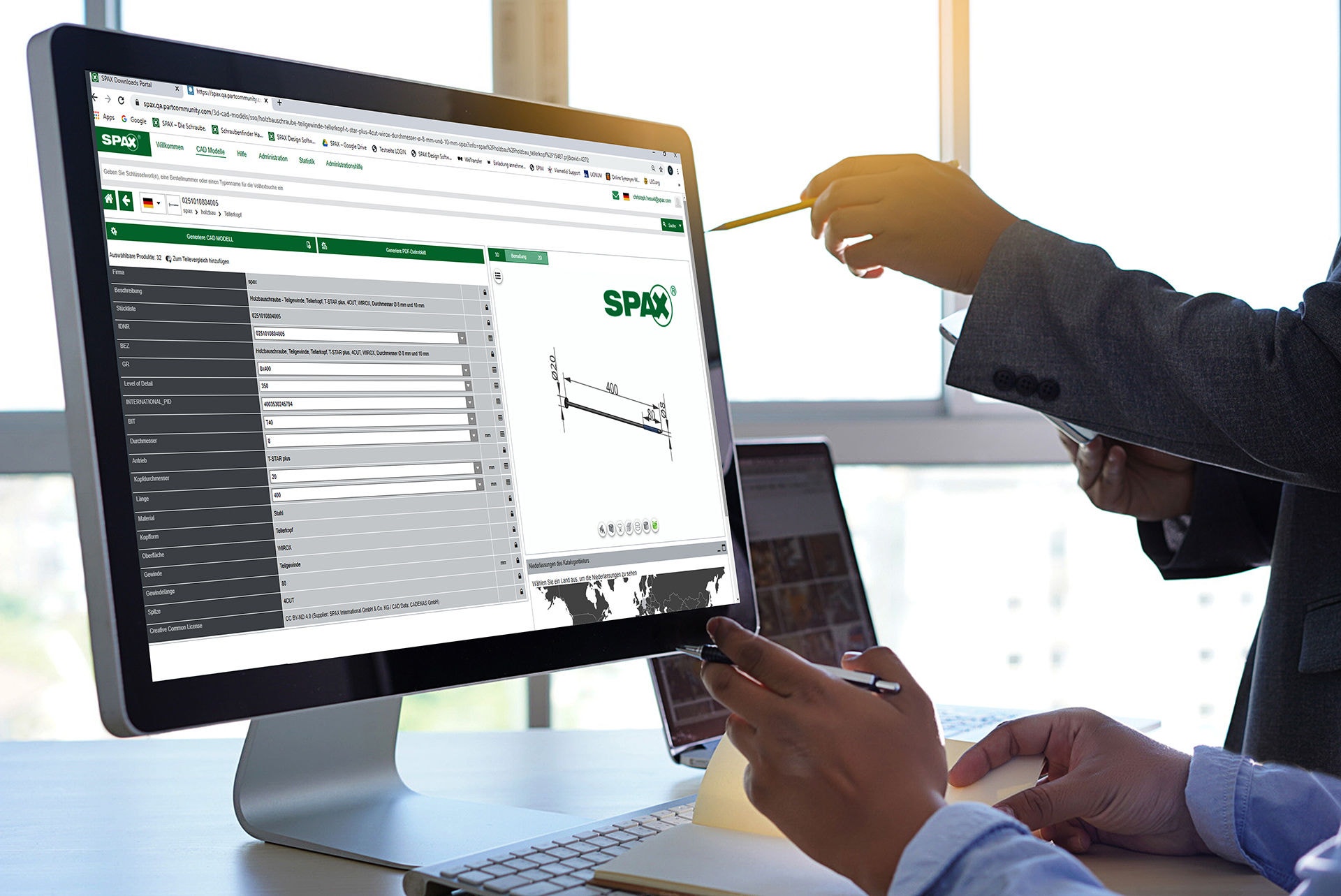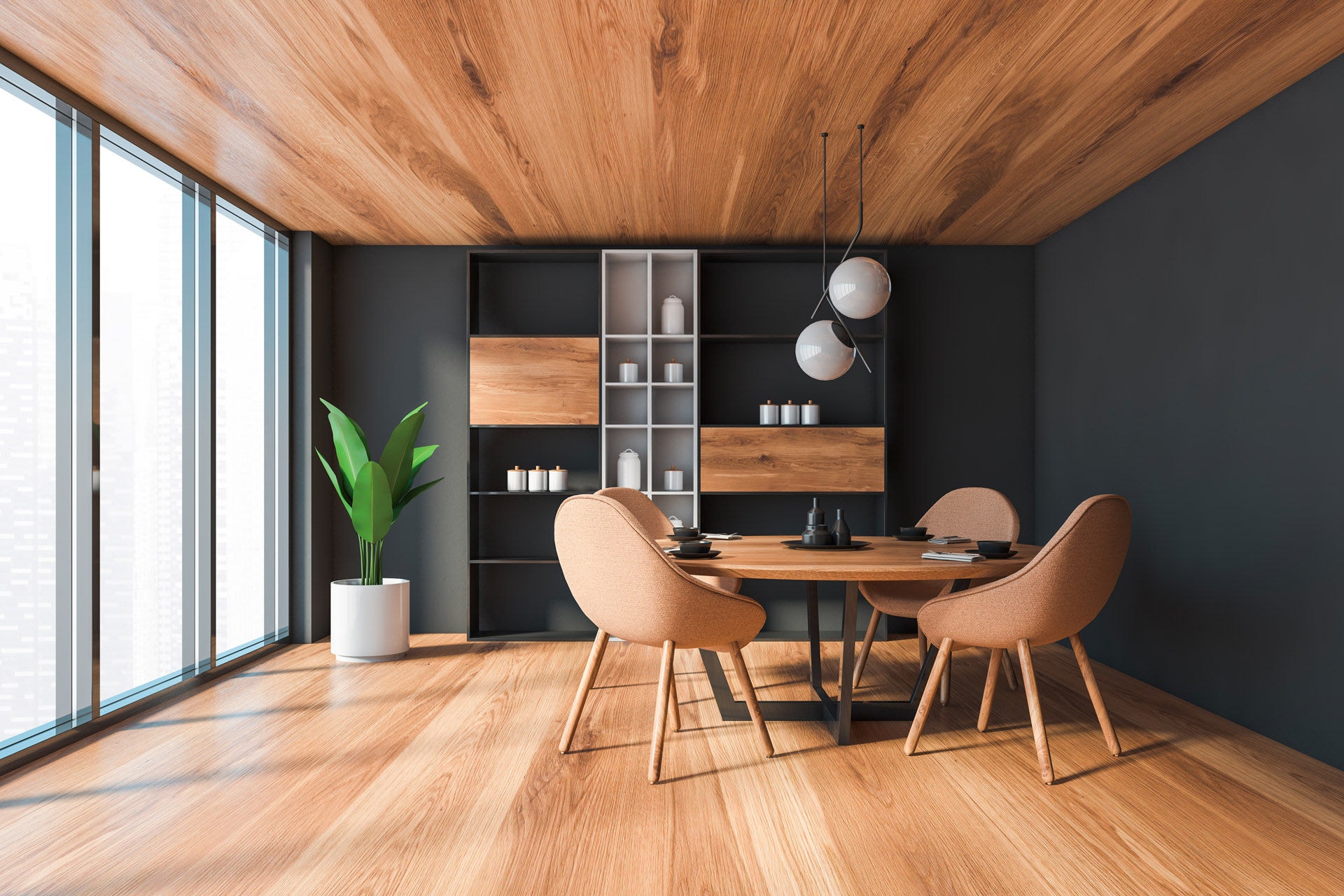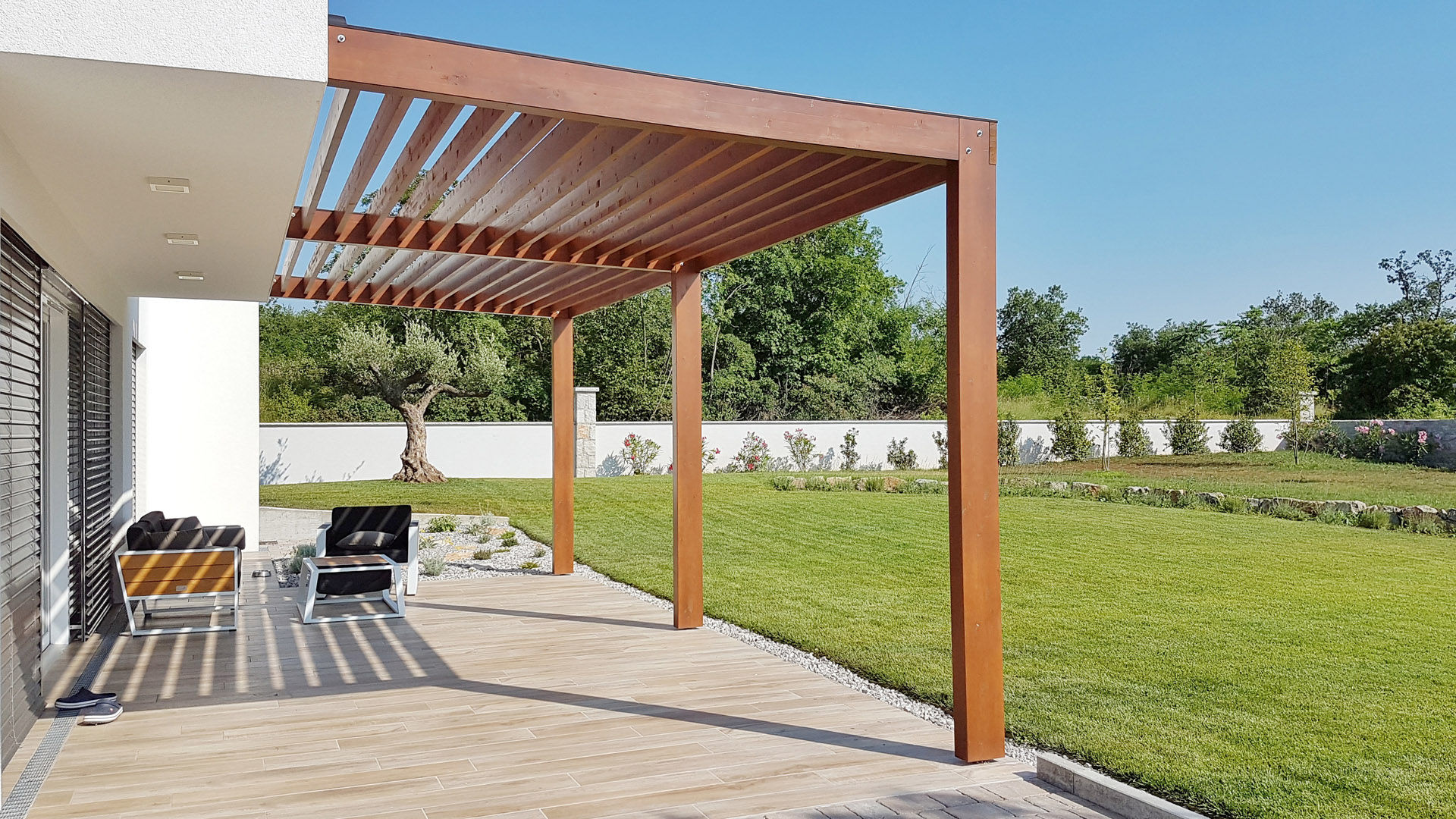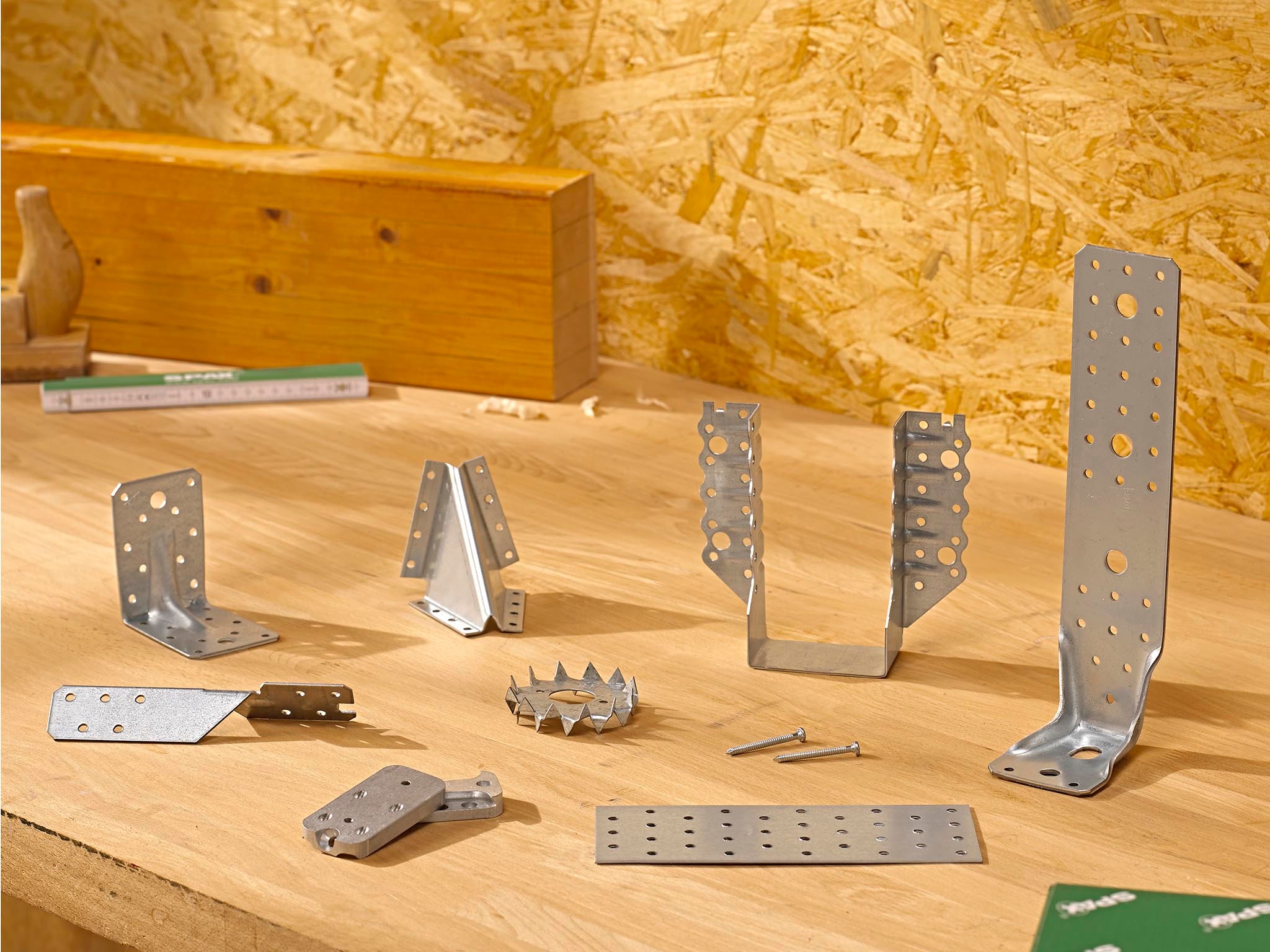- Engineering. Made in Germany.
- SPAX - we care.
- Description
- Downloads / Certificates
In contrast to the single-slot drive, the cross recess drive (also known as a Phillips drive) offers the advantage that the screwdriver blade can no longer slip out to the side and cause damage to the workpiece. Due to the tapering of the inner flanks in the cross recess, however, an axial force occurs when the screw is tightened, which pushes the blade out of the drive. This phenomenon is also known as the cam-out effect. The cross recess H drive is also used on our window construction screws (FEX), since the screwing-in torque is not too high. What this means for you: A simple Phillips screwdriver is all you need to install your windows quickly and securely.
The bugle head is only found on very few screws. It is predominantly used on drywall screws for fastening plasterboard. The concave, bugle-shaped design of the head offers a large enough surface to powerfully pull the plasterboards towards the substructure without completely piercing the top layer of cardboard. This is important since only the cardboard offers sufficient pull-through resistance – the brittle plasterboard core can't. The screw heads are inserted into the cardboard layer at a depth of approx. 1 mm so that they can be filled flush with the surface. What this means for you: Simple and rapid dry lining, screws sit perfectly in the board surface.
Coarse threads are predominantly used in wood construction, where screws have to be fastened quickly. Screws with coarse threads form their own counter-thread in the wood and are self-drilling. Unlike sheet metal screws with a fine thread, the force transmission with coarse-thread screws not only takes place over a few millimetres of the sheet metal, but over the entire thread length. This is why the thread turns can be arranged further apart. In addition to our wood construction screws, we have also equipped our GIX B drywall screws with a coarse thread. These screws are used for wood stud framing. What this means for you: Faster, battery-saving insertion of screws in all wooden substructures, perfect force transmission between thread and wood.
Our needle point is characterised by a steeper, longer screw tip. This enables sturdy, precise screw-setting on smooth substrates. It also ensures a rapid start in metal and plastic profiles. What this means for you: No slipping on smooth surfaces, less exertion during fastening.
Phosphate coating involves the application of a well-adhering phosphate layer to steel components such as screws. Our phosphate-coated GIX screws are predominantly used in dry lining. They offer two advantages here: on the one hand, they don't absorb moisture like galvanised screws do – which means no dark staining on wall surfaces. On the other hand, phosphate-coated screw heads provide perfect adhesion for joint filler in the dry lining. What this means for you: Screw holes are very easy to fill in dry lining, resulting in perfect wall surfaces.
In contrast to the single-slot drive, the cross recess drive (also known as a Phillips drive) offers the advantage that the screwdriver blade can no longer slip out to the side and cause damage to the workpiece. Due to the tapering of the inner flanks in the cross recess, however, an axial force occurs when the screw is tightened, which pushes the blade out of the drive. This phenomenon is also known as the cam-out effect. The cross recess H drive is also used on our window construction screws (FEX), since the screwing-in torque is not too high. What this means for you: A simple Phillips screwdriver is all you need to install your windows quickly and securely.
The bugle head is only found on very few screws. It is predominantly used on drywall screws for fastening plasterboard. The concave, bugle-shaped design of the head offers a large enough surface to powerfully pull the plasterboards towards the substructure without completely piercing the top layer of cardboard. This is important since only the cardboard offers sufficient pull-through resistance – the brittle plasterboard core can't. The screw heads are inserted into the cardboard layer at a depth of approx. 1 mm so that they can be filled flush with the surface. What this means for you: Simple and rapid dry lining, screws sit perfectly in the board surface.
Coarse threads are predominantly used in wood construction, where screws have to be fastened quickly. Screws with coarse threads form their own counter-thread in the wood and are self-drilling. Unlike sheet metal screws with a fine thread, the force transmission with coarse-thread screws not only takes place over a few millimetres of the sheet metal, but over the entire thread length. This is why the thread turns can be arranged further apart. In addition to our wood construction screws, we have also equipped our GIX B drywall screws with a coarse thread. These screws are used for wood stud framing. What this means for you: Faster, battery-saving insertion of screws in all wooden substructures, perfect force transmission between thread and wood.
Our needle point is characterised by a steeper, longer screw tip. This enables sturdy, precise screw-setting on smooth substrates. It also ensures a rapid start in metal and plastic profiles. What this means for you: No slipping on smooth surfaces, less exertion during fastening.
Phosphate coating involves the application of a well-adhering phosphate layer to steel components such as screws. Our phosphate-coated GIX screws are predominantly used in dry lining. They offer two advantages here: on the one hand, they don't absorb moisture like galvanised screws do – which means no dark staining on wall surfaces. On the other hand, phosphate-coated screw heads provide perfect adhesion for joint filler in the dry lining. What this means for you: Screw holes are very easy to fill in dry lining, resulting in perfect wall surfaces.
| Document Type | Format |
|---|
We help with the choice of screws
Discover the world of SPAX
- SPAX in der Praxis
- Services für Profis
- SPAX - WE CARE
- Downloads
